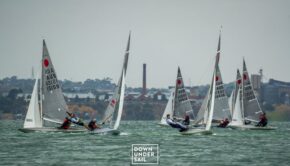How to get the best IRC rating
Published on March 16th, 2015
It’s the same type of boat going the same speed, but how come their IRC rating is so much lower than yours? Although getting your rating as low possible is important, making a boat go faster with little additional rating penalty can be even more effective.
No rating system can be perfectly fair to all boats in all scenarios and it’s important to know what a particular measurement rule ‘likes’ before making a change. Some argue that optimising your boat to be faster than your main rivals will put you in clear air ahead of the pack, while others recommend being closer to them for a better chance of beating them tactically.
For some events an endorsed IRC certificate is stipulated, requiring weighing and check measurement by an official measurer. Displacement, for example, can vary markedly from the builder’s stated figure and an endorsed certificate also provides peace of mind that your rating is accurate and that you are not cheating unintentionally.
Although this process adds some expense, endorsement can sometimes deliver a nice surprise with a lower rating, but overall the drive for simplicity has made IRC measurement clearer for all, from bilge keelers at club level right up to grand-prix racing yachts.
Just like yacht design, measurement rules evolve year on year so if a competitive rating is important to you it helps to understand these subtle changes.
But before spending your hard-earned cash you should not ignore one speed boost that the crew can achieve in a single team- building weekend – fairing the bottom!
Jonty Sherwill of Yachting World asked measurement experts for their 5 tips: CLICK HERE









 We’ll keep your information safe.
We’ll keep your information safe.